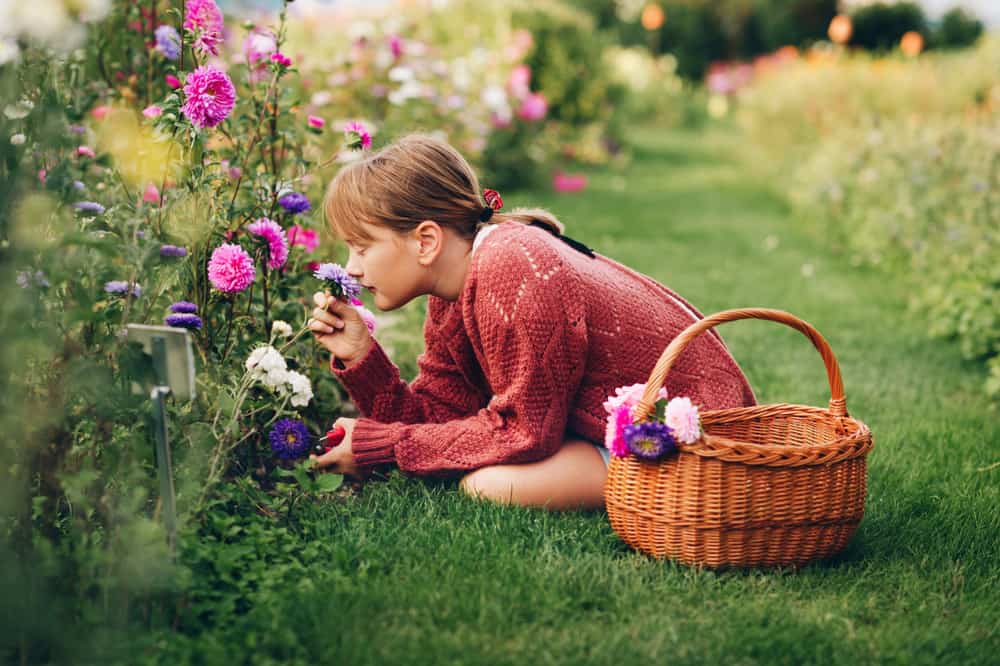
Floral gardens are appreciated for their visuals. Striking colors, delicate blooms, and intricate patterns – it’s not hard to understand why. But the ideal garden should excite all the senses, not just the one.
Scent is often the last thought when planning a garden (if it is a thought at all). However, it is one of the best ways to take your garden to the next level. Put fragrance at the forefront of your flower choices this season with any one of these 15 plants.
1. Sweet Alyssum
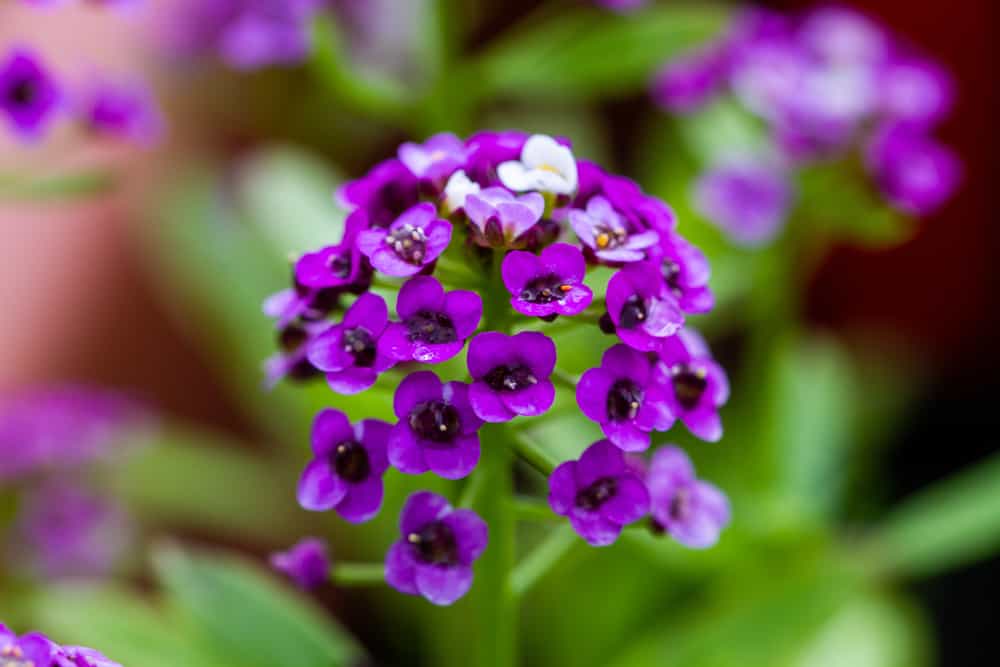
This compact plant has clusters of tiny flowers perfect for any garden location from borders to baskets. In case it wasn’t clear from the name, the flowers release a distinctly sweet smell that can fill up any space, despite the plant’s smaller size.
Sweet alyssum can tolerate drought and heat, although they don’t like the cold. They are generally problem-free plants that require little maintenance – an ideal candidate for perennial bed ground cover.
These plants self-sow and continue to bloom year after year, filling your garden with a sweet honey-like smell.
USDA Hardiness Zone 5–9
2. Rose
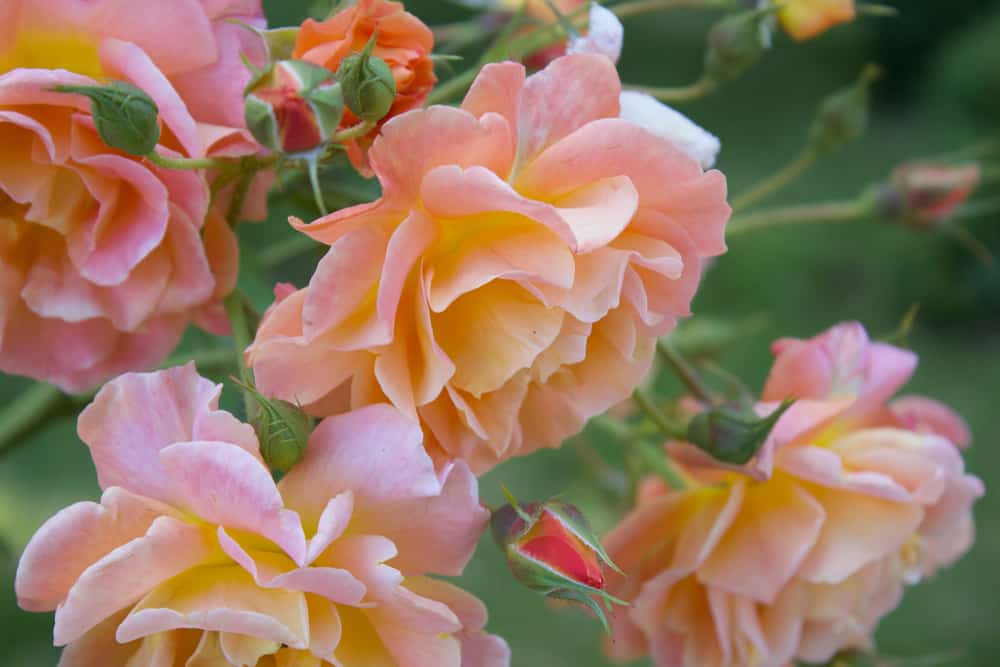
Roses are legendary in the flower gardening industry, spawning hundreds of societies and committed fans. And, of all the many reasons gardeners grow roses, smell has to be one of the most popular. The phrase ‘stop and smell the roses’ isn’t a cliché for nothing.
They may have a reputation for being difficult to grow, but once you get the hang of it, you’ll be able to stop and smell the roses (literally) whenever you please.
USDA Hardiness Zone 3-11
3. Peony

If you’re looking for variety in scent, peonies are the way to go. There are many different flower types, each with its own scent. Some gardeners report smells of citrus, others spice. A few varieties even have a smell reminiscent of roses. And, like roses, some have no scent at all.
This plant is not only grown for the flowers. The colorful pink, purple, or white blooms are complemented by lush, deep green leaves that fill a garden – even out of the flowering season.
USDA Hardiness Zone 3-8
4. Hyacinth

For a quintessential spring fragrance, look no further than the hyacinth. The smell is intense and intoxicating, filling up a whole garden with just a few plants. This is largely thanks to the iconic flower stalks that carry several closely packed colorful flowers.
Hyacinths are ideal container plants and make a great addition to a cut flower garden. As perennial plants, they continue to flower every year – the ultimate signal that spring has arrived.
USDA Hardiness Zone 3-9
5. Lavender

Lavender is one of the most well-known fragrant plants. Just mentioning the word lavender evokes memories of its unique floral, herbaceous smell. The flowers also hold their fragrance when dried. These are plants that keep on giving long after the flowers have been removed.
The flowers are not only favoured for their fragrance. Lavender has become popular in the culinary world for its intense botanical flavour. It can be added to salads, used in syrup to flavour drinks, used as a seasoning, or made into a tea.
USDA Hardiness Zone 5–9
6. Gardenia
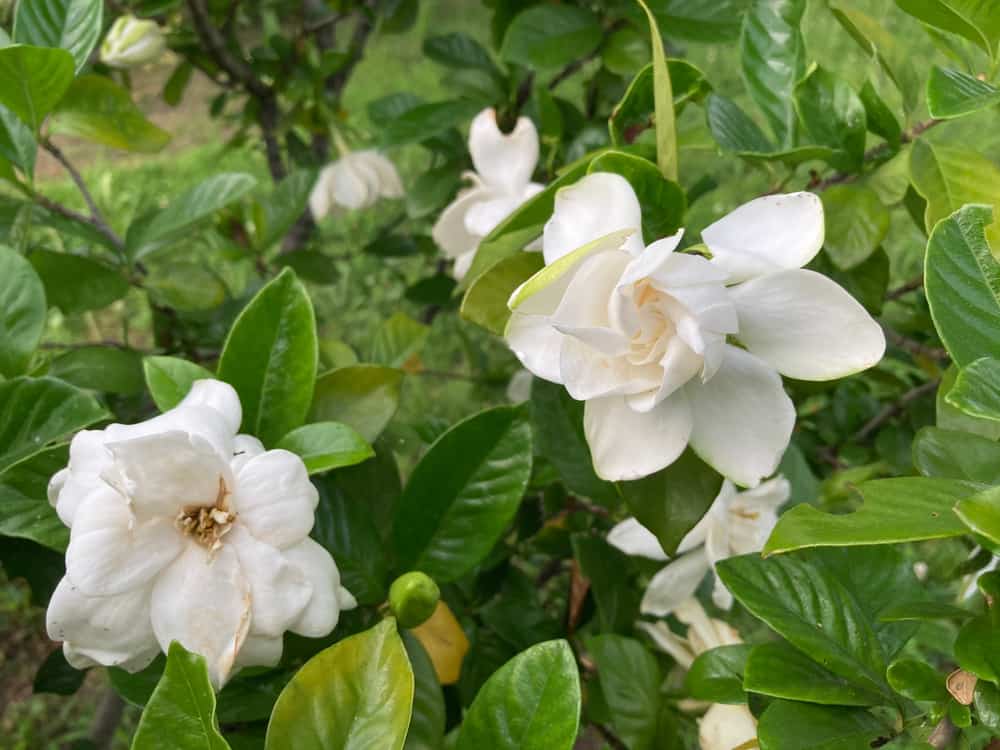
Those who’ve spent just a few minutes in a perfume store will understand how popular the gardenia’s scent is. It is another quintessential floral scent that is described by gardeners and perfume connoisseurs as creamy, elegant, and romantic. Why buy the perfume when you can enjoy the scent in your own garden?
Depending on your chosen variety, these plants will produce flowers from spring to fall, emitting their popular fragrance for the better part of the year.
USDA Hardiness Zone 8-11
7. Garden Phlox
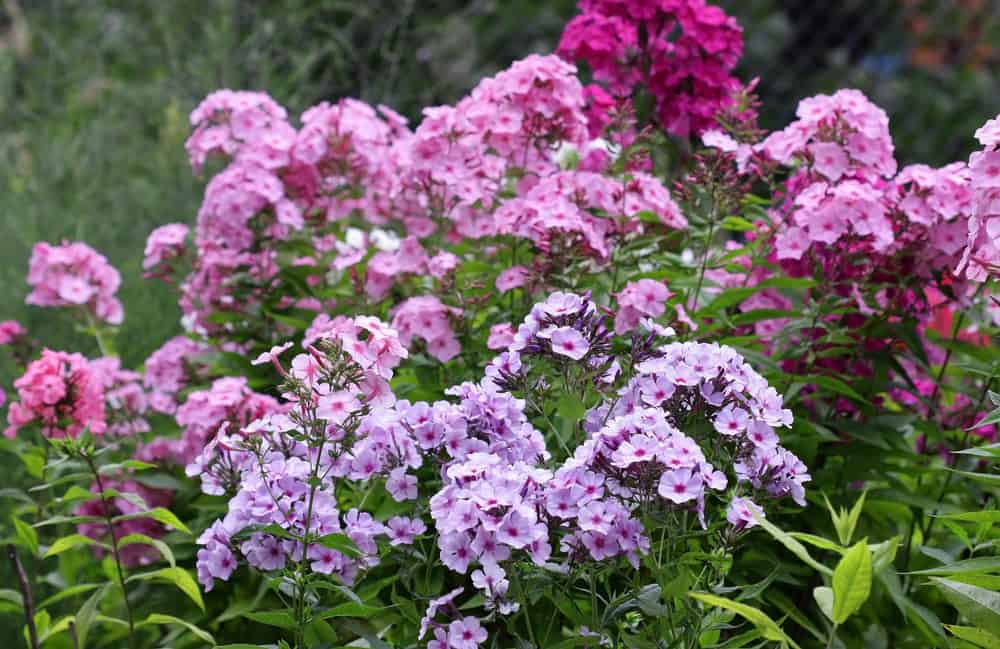
Phlox scent may be lesser known than some of the other plants on this list, but it no less fragrant. The tall blooms appear from spring into late summer and come in a wide range of colors. The scent has a number of descriptors, from sweet to spicy.
Garden phlox can grow in both sunny and shady spots. It is unfortunately known for its common problems with powdery mildew, but you can combat this issue with increased air circulation.
USDA Hardiness Zone 3-8
8. Heliotrope
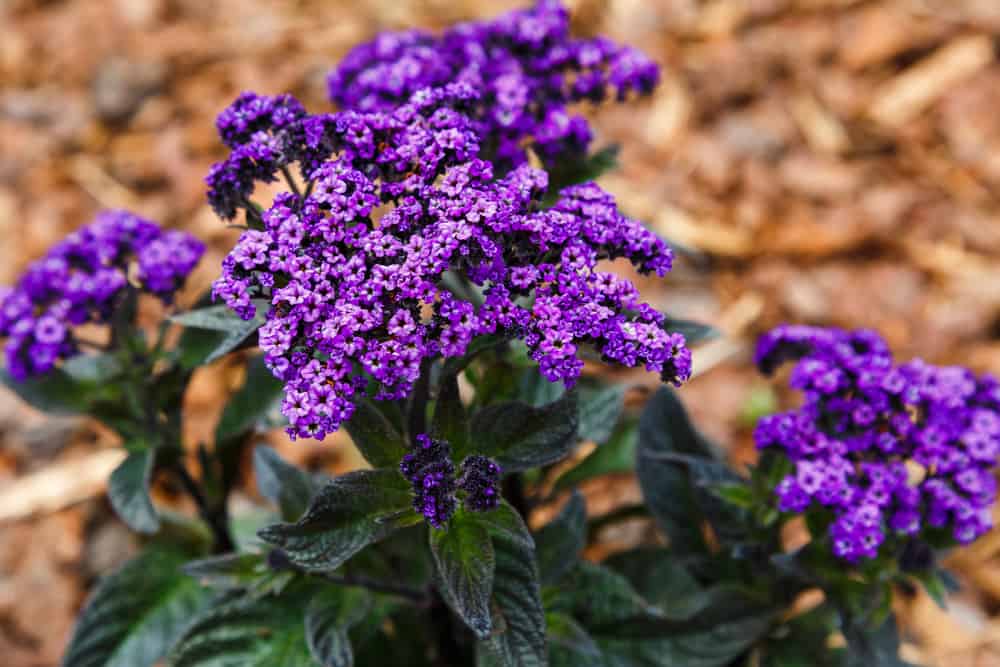
Heliotropes are a cottage garden staple. Reminiscent of hydrangea, the clusters of small flowers release a sweet fragrance likened to cherries or vanilla. This scent has awarded it the common nickname ‘cherry pie plant’.
It may be considered old-fashioned to some, but heliotropes are undoubtedly making a comeback. For the strongest fragrance, choose the classic deep purple variety. You won’t be disappointed.
USDA Hardiness Zone 9-11
9. Jasmine

Exotic, tropical, and sweet are just some of the words ascribed to the jasmine plant. They can apply to the plant itself and its popular strong scent. Grown in large clusters, the fragrance carries across your garden and is likely to become your gardening signature smell.
If you don’t have much outdoor space, jasmine can also be grown indoors in front of a sunny window. When flowering, the plant’s tropical fragrance can easily fill a room.
USDA Hardiness Zone 9-11
10. Flowering Tobacco
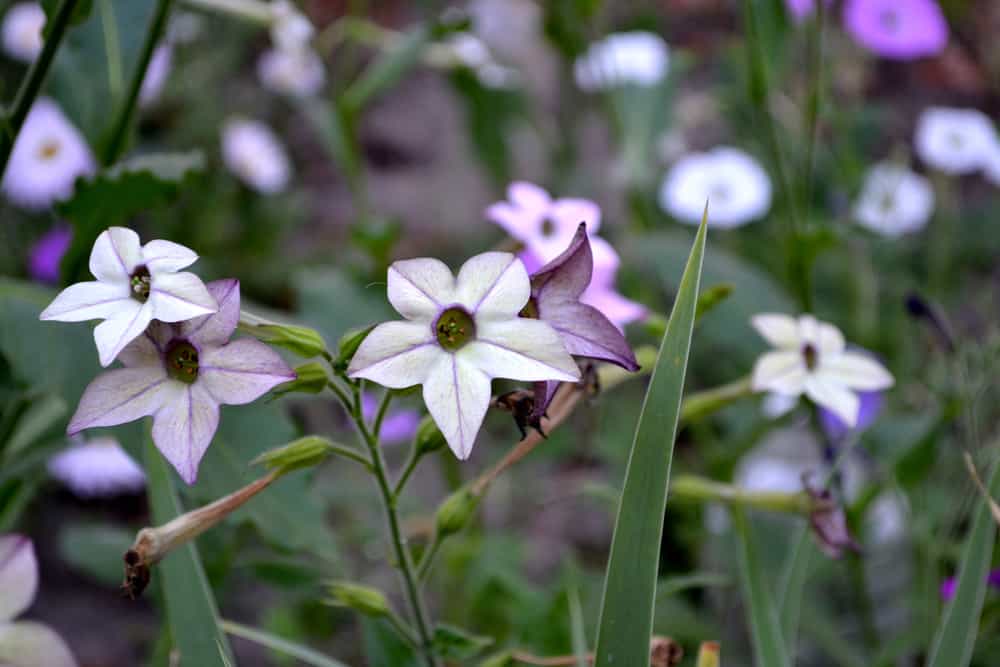
It may have the word ‘tobacco’ in its common name, but don’t let that cloud your judgment of this plant. Nicotiana has an intensely sweet smell, similar to jasmine. The flowers open at night, filling the evening air with their scent.
Some varieties do not flower for very long, but their striking look and wonderful fragrance make planting worthwhile.
USDA Hardiness Zone 10-11
11. Angel’s Trumpet
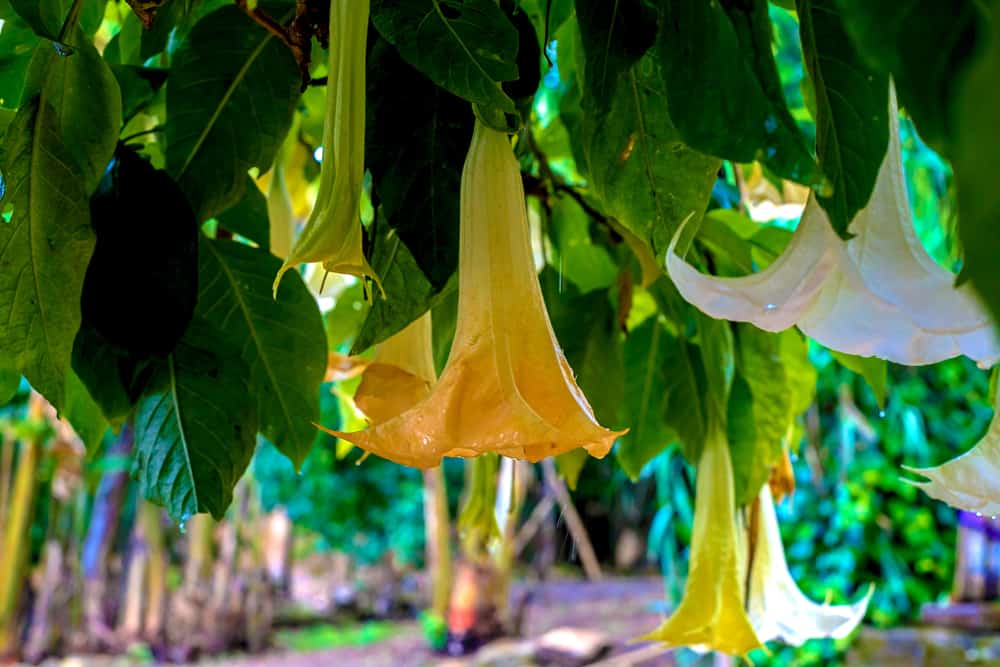
Botanically known as Brugmansia, this tree produces impressive carpets of trumpet-shaped flowers. It can grow 10 feet tall or taller, making it an ideal wall or fence cover. Like nicotiana, these flowers also bloom at night, spreading a soft, sweet smell with hints of citrus.
Brugmansia grows well in containers with enough watering and fertilizer. The giant flowers will easily attract a number of pollinators to your patio, and the smell is bound to attract you to your patio too.
USDA Hardiness Zone 9-12
12. Honeysuckle
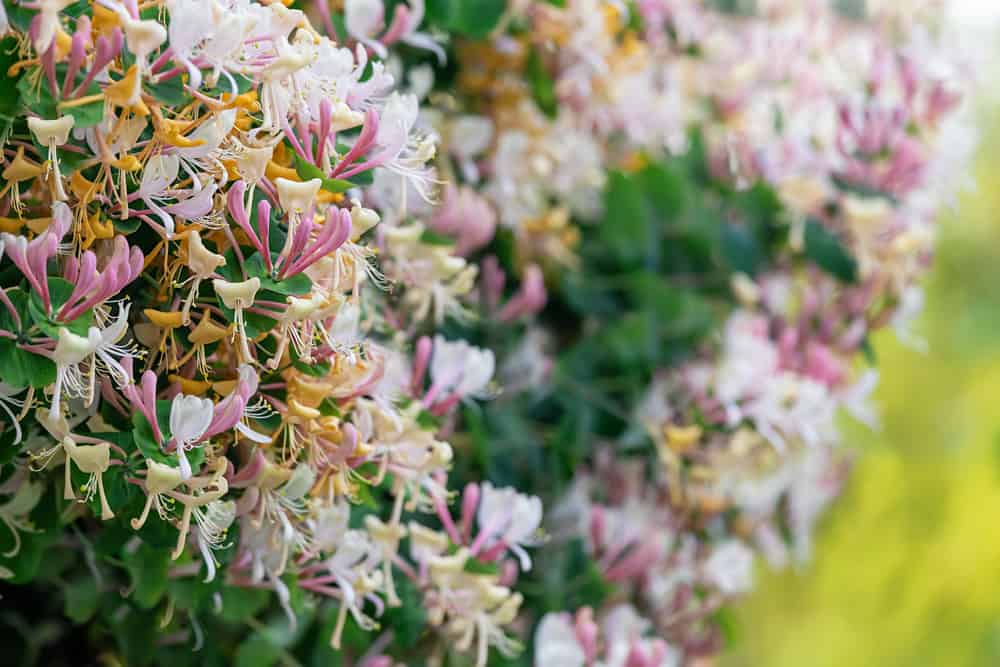
Honeysuckle varieties are famous for their sweetness in scent and in taste. The nectar of this climbing plant attracts hummingbirds and bees all season long. There are over 180 different varieties in a range of colors – an option for every kind of gardener.
Honeysuckle plants grow incredibly fast, producing hundreds of flowers that form a carpet of color when grown in clusters.
USDA Hardiness Zone 6-9
13. Freesia
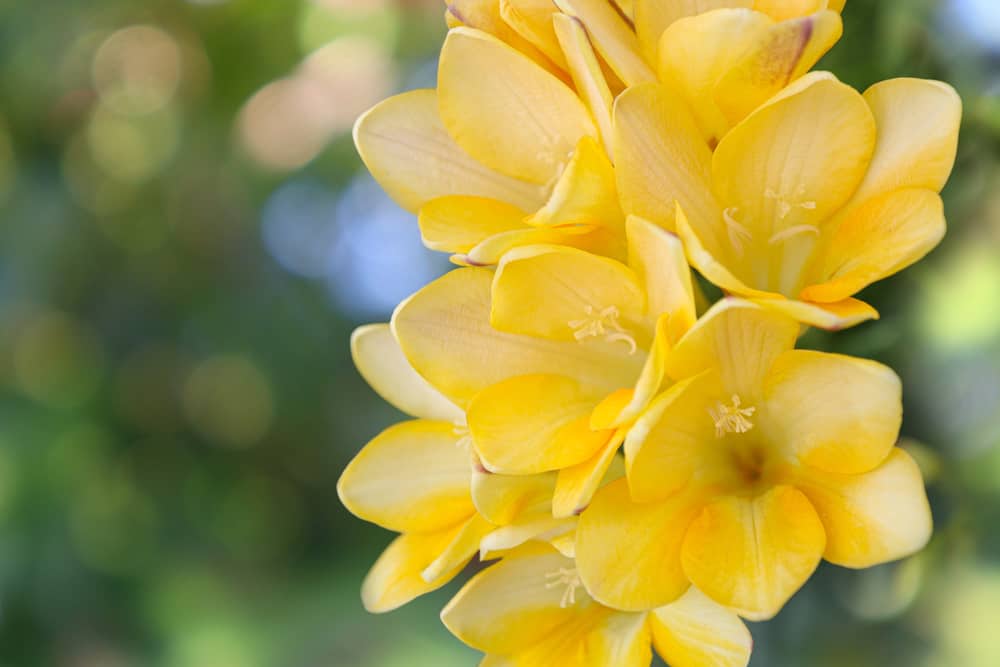
Another trumpet-shaped flower popular in arrangements is the freesia. The bulbs are often grown indoors, flowering prolifically when placed on any sunny windowsill. The blooms are grouped on leafless stems that release an irresistible floral fragrance.
For a show-stopping outdoor display, group a variety of colors together. There are many to choose from – white, purple, red, blue, and many more – that all release a stunning scent to fill a flower garden.
USDA Hardiness Zone 7-11
14. Flowering Crabapple
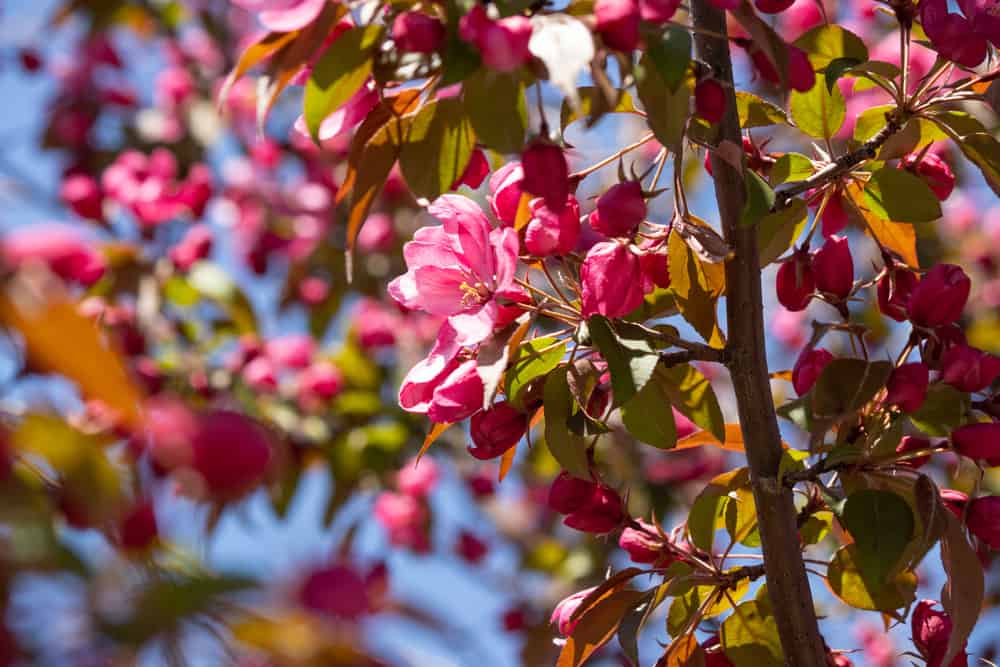
If you thought the humble apple couldn’t get any better, think again. Flowering crabapples are popular ornamental trees of the Malus genus. In spring, the trees explode with colorful blooms that have a variety of fragrances. Some flowers smell (predictably) like sweet apples, while others have a spicier aroma reminiscent of cinnamon or cloves.
Along with the delicious fragrance, you’ll have some delicious fruits at the end of the season. Maybe not delicious to you – crabapples are usually not eaten due to their sour taste – but definitely to the birds in the area who flock to the fruiting tree in summer.
USDA Hardiness Zone 4-8
15. Magnolia
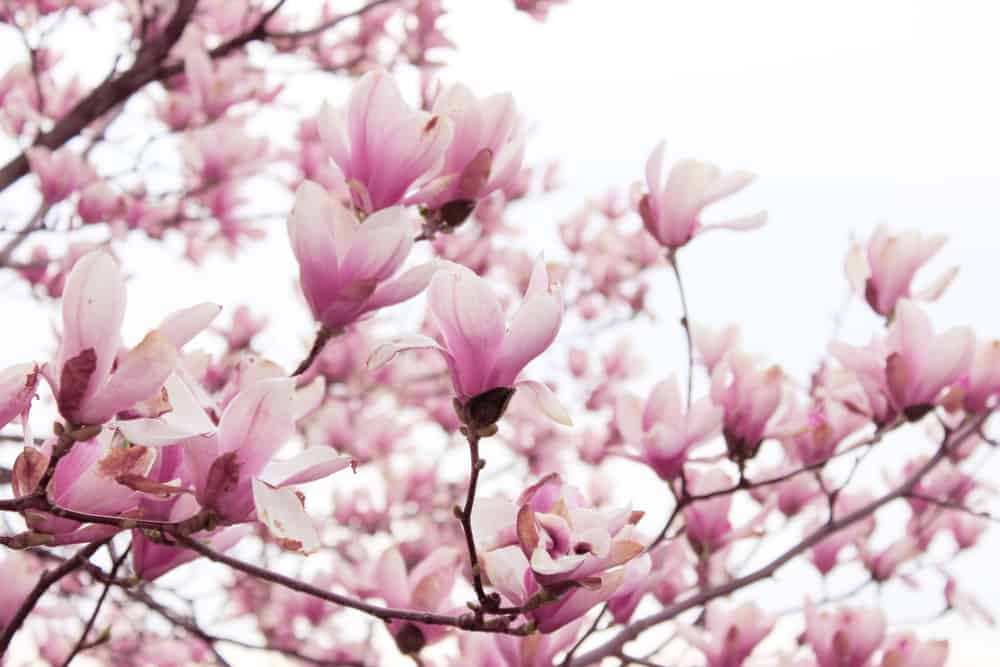
Once you get a whiff of the giant blooms of the Magnolia tree, it’s hard to want to grow anything else. Incredibly popular in the South, Magnolia trees release a scent described as sweet, citrusy, and champagne-like. It is commonly used in perfumes and fragrant body products.
Growing a magnolia tree is quite a commitment. They are slow-growing and can take up a lot of space, depending on your chosen variety. But your effort will be rewarded when you see (and smell) your tree in flower.
USDA Hardiness Zone 7-9
It’s hard to go wrong when choosing fragrant flowers for your garden. Besides filling the air with irresistible aromas, the flowers are visual showstoppers in themselves and will attract a range of wildlife to your garden, benefiting the rest of your plants. Once they’re planted, any of these 15 flowering plants are bound to become your new favorite scent.
